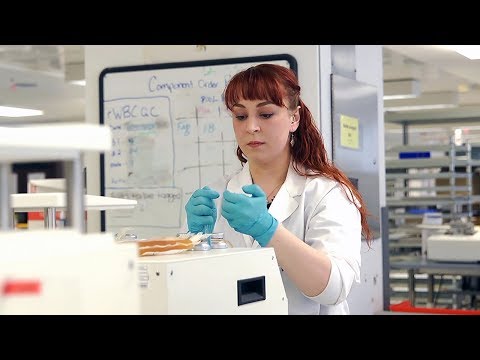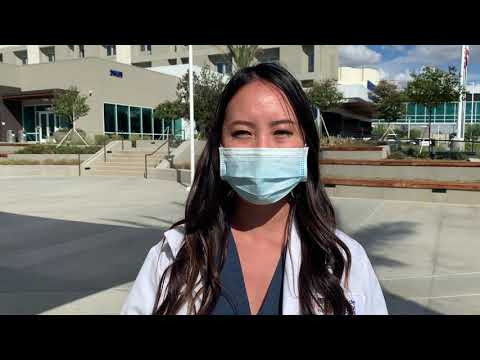How to Get a Medical Assistant Certificate
Contents [show]
How to Get a medical assistant Certificate in 2020
If you’re interested in becoming a medical assistant you might be wondering how to get a medical assistant certificate.
Checkout this video:
Introduction
Medical assistants are in demand! According to the Bureau of Labor Statistics, employment of Medical Assistants is projected to grow 23 percent from 2016 to 2026, much faster than the average for all occupations. fueling this growth are anticipated advances in medical technology and an aging population.
Medical assistants perform routine administrative and clinical tasks to keep the offices of physicians and other health practitioners running smoothly. The job duties of medical assistants vary depending on state law and the type of health care facility. Their tasks range from scheduling appointments and handling billing and insurance paperwork to taking patients’ vital signs, administering injections, and running basic laboratory tests.
A medical assistant certificate program generally takes about 1 year to complete, although some programs may take longer. These programs include classroom, laboratory, and clinical components. Classwork covers topics such as Medical Terminology anatomy, physiology, office procedures, insurance billing and coding, and recordkeeping.
What is a medical assistant?
A medical assistant is a healthcare professional who supports the work of physicians and other health professionals, usually in a clinic setting. Medical assistants are often the first point of contact for patients coming into a healthcare facility. In addition to greeting patients and answering their questions, medical assistants may also take medical histories, collect urine and blood samples, prepare patients for examination, and provide basic patient care. Some medical assistants also schedule appointments and perform billing and coding tasks.
Medical assistants usually have at least a high school diploma, although some have completed postsecondary education programs. Most states do not require medical assistants to be licensed or certified, but many employers prefer to hire those who have completed a formal training program and earned certification from an accredited organization.
Duties of a medical assistant
Medical assistants perform a variety of clerical, laboratory, and clinical tasks to keep doctors’ offices, clinics, and other healthcare facilities running smoothly. They may greet patients, update and file patient medical records schedule appointments, arrange for hospital admissions and laboratory services, handle correspondence, transcribe doctors’ orders from charting to patient instruction sheets, prepare insurance claim forms, and schedule follow-up visits. Experienced medical assistants often take on additional responsibilities such as handling billing and coding for insurance purposes or instructing patients on health maintenance and disease prevention.
Education and training
Education and training requirements for medical assistants vary by state and employer. Some states have certification programs for medical assistants, while others allow medical assistants to be certified through a professional organization. Employers may also have their own training programs.
Most medical assistants have a postsecondary education, although some states do not require it. Medical assistants typically complete a 1- or 2-year program that leads to a certificate or diploma. Some medical assistants complete formal postsecondary education programs that lead to an associate degree. A few states require medical assistants to be licensed, but this is not common.
Medical assistants must complete an accredited educational program and pass a certification exam to earn the Certified Medical Assistant (CMA) credential from the American Association of Medical Assistants (AAMA). To maintain the credential, CMAs must complete 60 hours of continuing education every 5 years.
Certification
There are many ways to become a certified medical assistant. You can take a certification exam through an accredited organization, such as the National Healthcare Association (NHA) or the American Medical Technologists (AMT). You can also earn your certificate through a formal training program, such as an Associate’s degree or diploma program from an accredited college or vocational school. No matter which route you choose, you’ll need to complete an accredited medical assisting program and pass a certification exam to earn your credential.
Salary and job outlook
Job outlook
Medical assistants held about 634,800 jobs in 2018. The median annual wage for medical assistants was $33,610 in May 2018.
– Most medical assistants work in physicians’ offices, including those of dentists, podiatrists, and other health practitioners.
– A small number of medical assistants work in hospitals; in 2018, about 19 percent of medical assistants worked in general medical and surgical hospitals, and about 5 percent worked in outpatient care centers.
Pros and cons of being a medical assistant
Medical assistants are in demand. They are versatile professionals who can work in a variety of settings, including doctor’s offices, clinics, and hospitals. If you’re thinking about becoming a medical assistant, you might be wondering if it’s the right career for you. Here are some pros and cons to help you make your decision.
Pros:
-Medical assistants are in high demand. The Bureau of Labor Statistics predicts that the demand for medical assistants will grow by 23 percent between 2016 and 2026, which is much faster than the average for all occupations.
-They can work in a variety of settings. Medical assistants can work in doctor’s offices, clinics, hospitals, and other healthcare facilities.
-They have a versatile skill set. Medical assistants perform both clinical and administrative tasks, so they are able to fill a variety of roles in a healthcare setting.
-They can earn a good salary. The median annual salary for medical assistants was $32,480 in 2016, according to the Bureau of Labor Statistics.
-They have good job prospects. In addition to being in high demand, medical assistants also have good job prospects. The Bureau of Labor Statistics predicts that there will be nearly 184,000 new jobs for medical assistants between 2016 and 2026.
Cons:
-The job can be demanding. Medical assistants have a lot of responsibility and their days can be long and hectic. They might have to work evenings or weekends to keep up with the demands of the job.
-The job might be stressful. Medical assistants often have to deal with sick patients and worried families, so the job can be emotionally demanding as well as physically demanding.
-There is little room for advancement. Medical assistants usually start out working in entry-level positions with little opportunity for advancement
Is a medical assistant career right for you?
A medical assistant certificate can be your key to a rewarding, in-demand career in healthcare. But before you take the plunge, it’s important to make sure that a medical assistant career is the right fit for you. Here are some things to consider:
Do you have strong communication and customer service skills?
As a medical assistant, you’ll be the first point of contact for patients coming into the healthcare facility. It’s important that you have strong communication and customer service skills in order to put patients at ease and ensure that they have a positive experience.
Are you detail-oriented?
Medical assistants are responsible for maintaining patient records and keeping track of appointments and insurance information. It’s important that you have strong attention to detail in order to keep the office running smoothly.
Are you comfortable working with technology?
Medical assistants need to be comfortable using technology, as they will be responsible for using electronic health records (EHR) systems. In addition, many facilities use automated appointment scheduling and billing systems, so it’s important that you are comfortable working with computers.
Do you have good time management skills?
As a medical assistant, you’ll need to be able to juggle multiple tasks at once while still providing excellent patient care. Good time management skills are essential in order to be successful in this career.
10 steps to becoming a medical assistant
There are many steps that prospective medical assistants must take before they can enter the workforce. Here are 10 of the most important:
1. Complete a medical assistant program that has been accredited by either the Commission on Accreditation of Allied Health Education Programs (CAAHEP) or the Accrediting Bureau of Health Education Schools (ABHES).
2. Become certified as a medical assistant through an organization such as the American Association of Medical Assistants (AAMA), the National Healthcare Association (NHA), or the American Medical Technologists (AMT).
3. Obtain a state license, if required. Some states require medical assistants to be licensed in order to practice.
4. Pass a criminal background check. Many employers require medical assistants to have a clean criminal record in order to be hired.
5. Complete a medical assistant externship, if required by your chosen program. This will give you hands-on experience in the field and help you prepare for your future career.
6. Find a job! Start your search with our list of top employers for medical assistants, or use our job search tool to find open positions near you.
7. Once you’ve landed a job, complete any required training provided by your employer. This may include learning how to use Electronic Health Records (EHRs) or other software programs specific to your workplace.
8. Stay up-to-date on continuing education requirements in your state, if applicable, and renew your certification as needed to maintain good standing with your chosen organization.
9. Advance in your career! Many medical assistants start out in entry-level positions and then move up into management roles over time. There are also opportunities to specialize in certain areas, such as optometry or pediatrics.
10. Give back to the profession! Consider joining professional organizations such as the AAMA or AMT, and participate in advocacy efforts to support medical assisting as a vital part of our healthcare system
FAQs
Q: What is a medical assistant certificate?
A: A medical assistant certificate is a credential that indicates that an individual has completed a training program and has the skills and knowledge necessary to work as a medical assistant. In most cases, obtaining a certificate is the first step towards becoming certified as a medical assistant.
Q: How do I get a medical assistant certificate?
A: There are many ways to get a medical assistant certificate. One way is to attend an accredited institution and complete an accredited training program. Alternatively, you may be able to receive on-the-job training from a employer who is willing to invest in your education and certification.
Q: What are the benefits of having a medical assistant certificate?
A: Having a medical assistant certificate can improve your chances of getting hired, help you earn more money, and allow you to work in more specialized positions. Additionally, having a certificate may help you gain more respect from your colleagues and patients.







